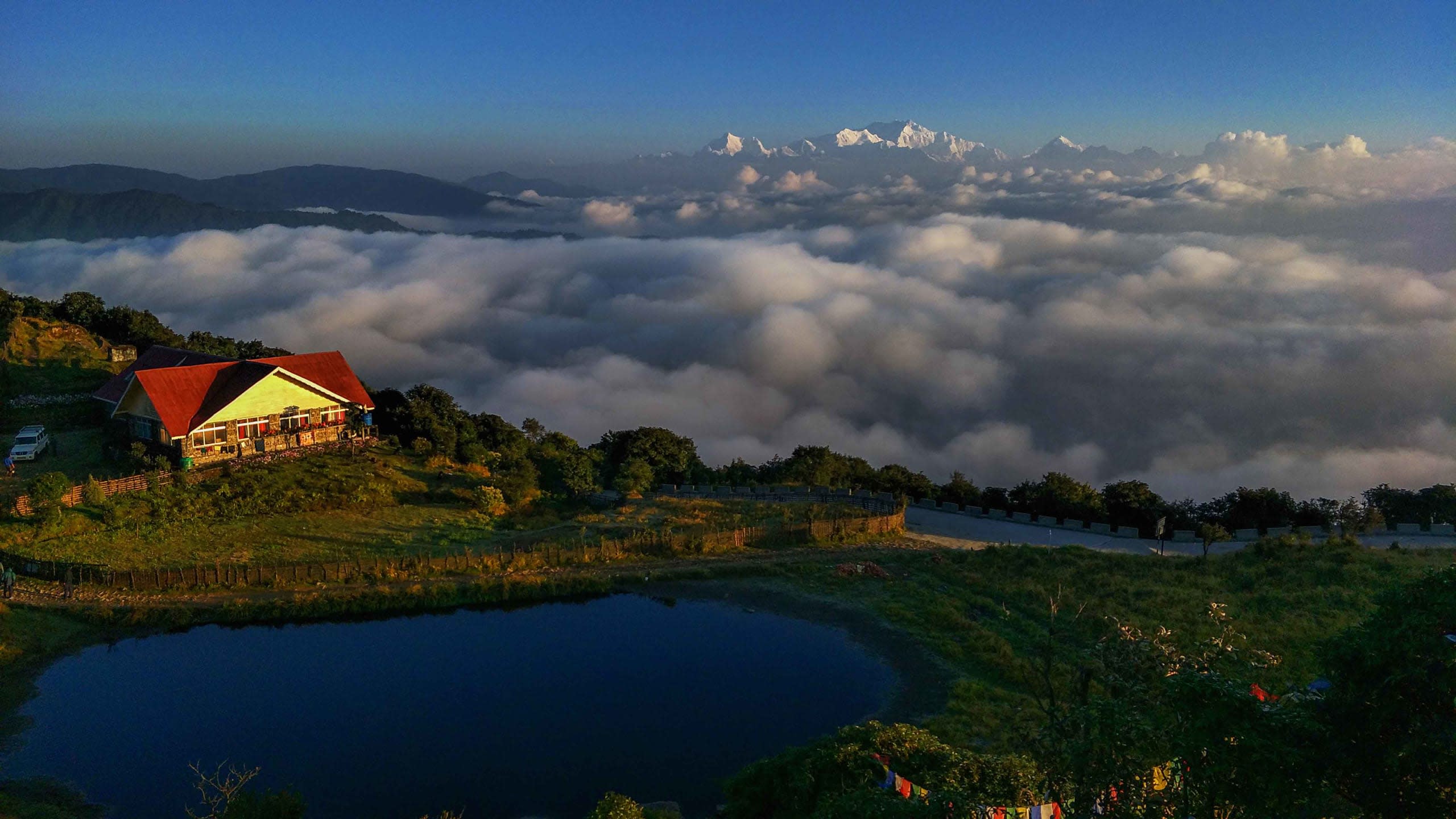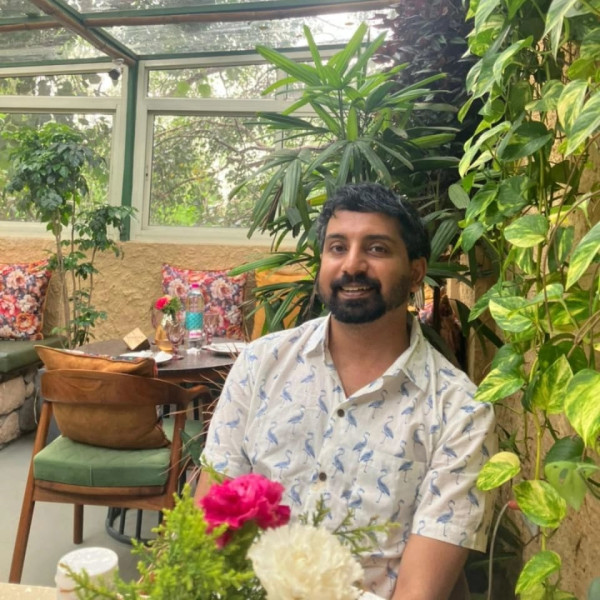 Listen to this article
•
15:34 min
Listen to this article
•
15:34 min
My head was in the clouds as I waited for my flight at Mumbai airport. I reminded myself that the chances of sighting a red panda were slim. Yet, I couldn’t contain my excitement. I was, after all, travelling to the high-altitude forests of Singalila National Park in West Bengal, one of few places in the country where the elusive mammal can be observed in its natural habitat.
A four-hour journey from Bagdogra airport took me to Maneybhanjang, where a vintage Land Rover waited to shuttle me to my homestay within the park. Posters displayed at the forest range office located in this small town at the park’s base gave me a sense of what I could expect to see over the following week. Having secured my entry permit from the office, I sat beside the driver, whose assured driving along the mountain road made the ride a little less rickety.
Along the way, bright red blooms on the rhododendron indicated that spring had well and truly arrived. We passed groups of trekkers as our Land Rover trundled up the mountain. It was peak season at Singalila. I inhaled the fresh mountain air, ready for all the surprises that lay in store at every bend along this mountain forest.
Many birds, such as the white-browed fulvetta (left) and fire-tailed myzornis (right), are attracted to seasonal blooms, making the park a popular birding spot in the Eastern Himalayas. (Left) Photos: Sourav Mondal (left), Dhritiman Mukherjee (right)
Cover photo: Tonglu, a small settlement inside Singalila National Park, is one of the places where tourists can choose to halt for the night. Cover photo: Sourav Mondal
Explore
The 78.6-sq-km Singalila National Park, on the northwestern border of Darjeeling district, lies on the Singalila ridge, an extension of Kanchenjunga mountain. The park is located between the altitudes of 2,400-3,650 m. It is part of the eastern Himalayas and is bordered by Sikkim in the north and Nepal in the west.
West Bengal’s Darjeeling district is the only place in India along with Sikkim and Arunachal Pradesh where the red panda is found. Habre’s Nest and Firefox Expeditions are two tourism initiatives in the region that offer wildlife enthusiasts experiences to spot the adorable, furry animal.
The trek route through the park from Manebhanjan to Sandakphu (3,636 m), the highest peak in West Bengal, and Phalut (3,595 m), is popular with hikers. On a clear day, from Sandakphu and Phalut, you can see four of the five highest peaks in the world — Everest (8,849 m), Kangchenjunga (8,586 m), Lhotse (8,516 m) and Makalu (8,481 m). Other popular trekking trails include Sandakphu to Gurdum, Molley to Srikhola, Phalut to Gorkhey and Bikeybhanjanjang to Rimbik. Two rivers — Rammam and Sirikhola — flow through the park.
Locals consider Kalpokhari Lake between Gairibas and Sandakphu to be sacred. Kalpokhari translates to “black lake” or “dark lake” in Nepali. One can also stop and visit the monasteries at Chitre and Meghma en route from Manebhanjan to Sandakphu.
Look out for
Mammals: Red panda, Asiatic black bear, leopard cat, clouded leopard, barking deer, serow, yellow-throated marten, wild boar, Himalayan mouse hare, pangolin, and pika.
Birds: Kalij pheasant, blood pheasant, satyr tragopan, red-breasted hill partridge, rufous-throated partridge, scarlet minivet, beautiful nuthatch, fire-tailed sunbird, crimson sunbird, rufous-vented tit, fire-tailed myzornis, golden-breasted fulvetta, brown and fulvous parrotbills, and yuhinas.
Flora: The Singalila ridge is covered by thick bamboo, oak, magnolia, and rhododendron forests between 2,000 to 3,600 m. Eighteen species of rhododendrons and over 600 varieties of orchids are found in the park. A large concentration of Himalayan cobra lilies (Arisaema sp.) grows on Sandakphu, which is known as the “mountain of poisonous plants”.

Safaris
Old Land Rovers that the British once used can be hired for safaris in the park. They are available from the jeep stand at Manebhanjan. It takes about 2.5 hours to reach Sandakphu from Maneybhanjan (30 km) and another 2.5 hours to reach Phalut from Sandakphu (20 km). Guides are not compulsory if one opts for a jeep safari, unlike a trek through the park when a guide is a must. The Highlander Guides and Porters Welfare Association offers registered guides and porters to tourists. Their office is in Manebhanjan. Tour operators based in Darjeeling also organise safaris into the park.
Cost: The entry fee to the park is Rs 120 per person (Indian) and Rs 500 per person (other nationalities); Rs 400 is charged for each vehicle entering the park. Land Rover fares for a round trip from Manebhanjan to Tumling/Tonglu, Sandakphu, and Phalut are Rs 2,500, Rs 5,500 and Rs 9,000, respectively; an additional Rs 1,500 is charged if one opts for a night stay along the way.
Hours: The park is open on all days from 7 am to 2 pm. It is advisable to reach the entry gate early as there is a limit on the number of vehicles allowed inside the park (15 during the off-season and 25 during peak season). Driving inside the park after 2 pm is strictly prohibited. The speed limit inside the park is 15 km/hour.

Getting there
By Air: Bagdogra airport in West Bengal is the nearest airport. The park is a four-hour drive from the airport. It is advisable to ask your hotel or tour operator to arrange a pickup as you may not get a cab from the airport to Manebhanjan.
By rail: The nearest railhead for narrow gauge is at Ghum, West Bengal, 13 km away from Tonglu, a settlement located inside the park.
For broad gauge, the closest station is New Jalpaiguri, West Bengal, 144 km away from the park. It is advisable to ask your hotel or tour operator to arrange a pickup as you may not get a cab from the railway station to Manebhanjan.
By road: NH 31A (Sevoke - Gangtok) passes through Darjeeling (which is 1.5 hours by car from Manebhanjan).
Nearest town: Manebhanjan — it is the access point for Tumling and Rimbik, gateways to the park.
Nearest city: Darjeeling — you can hire a cab from Darjeeling to reach Manebhanjan via Ghoom and Sukhiapori. The distance is 26 km and it takes about 1.5 hours by road.
Seasons
The two popular seasons to visit the park are spring and early winter. March to June is a good time as the temperature varies from 7 to 17 degrees C. Peak tourist footfall occurs in April and May. Moderate storms accompanied by hail are frequent during March-April. Temperatures vary from 1 to 10 degrees C from September to early December. This is another season for tourists to visit. The park remains closed to visitors from June 16 to September 15 every year.
Stay
Tourists can stay within the park or outside it at Manebhanjang or Darjeeling. Inside the park, several trekker’s huts and lodges are available in Tonglu, Tumling Phatak (Nepal), Joubari (Nepal), Gairibas Kalpokhari, Sandakphu, Phalut, Molley, Gorkey, Srikhola, Rammam and Rimbik. It is advisable to make bookings in advance during peak season. Contact details of some homestays are listed below.
• Dawa Lodge (Tumling): +91 98188 27720
• GTA Trekkers Hut (Gorkhey): +91 86701 80291
• Silent Valley Homestay (Samanden): +91 75839 94920
• Rammam Homestay (Rammam): +91 97331 72871
• New Singalila Park Homestay (Srikhola): +91 96798 22051
• Habre’s Nest (Kaiyakatta): +91 62912 82879
Important contacts
• Range Officer, Singalila South Range (Manebhanjan): +91 97334 70078
• Range Officer, Singalila North Range (Rimbik): +91 70014 17782/+91 74075 40600
• Singalila Land Rover Association (Manebhanjan): +91 98006 67075

TIPS
• Carry a litter bag or use the dustbins placed along your route.
• Do not play music on radios or speakers.
• Maintain the sanctity of sacred places such as temples, lakes and gompas along the way.
• Smoking, lighting fires or carrying any firearms is strictly prohibited.
• Cooking and camping inside the park is prohibited.
• It is advisable to wear clothes that merge with the natural surroundings.
• Carry a raincoat, sweater, and jacket as the weather can be unpredictable.
• Good trekking shoes will serve you well.
• Do not venture alone or enter restricted zones. It is advisable to stay with your guide or group.
• Maintain a safe distance from any wild animals you spot
• Do not attempt to feed any wild animals or birds
• The park permit is non-transferable.














